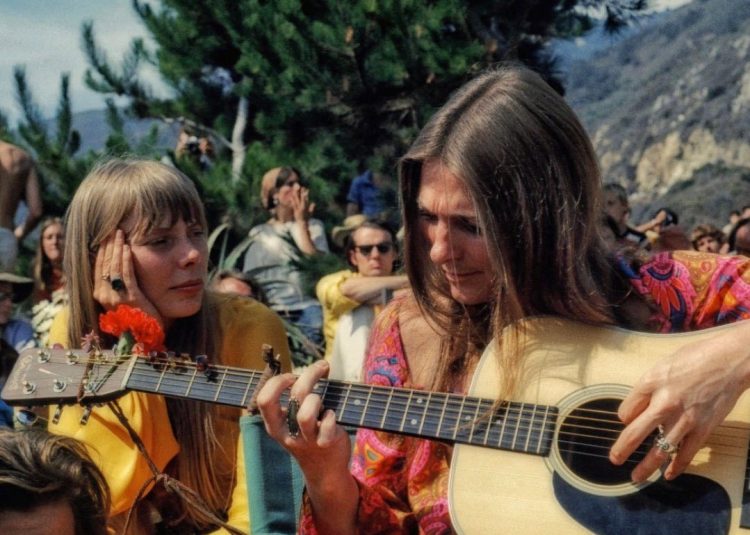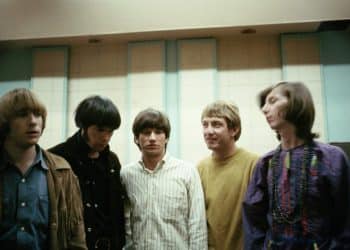Get ready to embark on a heartfelt journey through the rich, earthy sounds of folk music—a genre that speaks directly to the soul, tells stories of love and loss, struggle and triumph, and echoes the voices of generations past. In this article, we’re celebrating the Top 15 Most Popular Best Folk Music Songs of All Time, a handpicked collection of the most beloved and enduring tracks that have defined folk music across the decades.
From the poetic brilliance of Bob Dylan and the haunting harmonies of Simon & Garfunkel to the raw authenticity of Joan Baez and the stirring melodies of Woody Guthrie, these songs are more than just music—they’re living history. They’ve fueled movements, inspired change, and brought people together with nothing more than a guitar, a voice, and a story to tell.
Whether you’re a longtime lover of folk or a curious newcomer seeking authenticity in your playlist, this list is your perfect guide to the songs that shaped a genre and touched the hearts of millions. So sit back, listen closely, and let these timeless anthems carry you through the roots and rhythms of folk music’s greatest legacy.
1. If I Had a Hammer (1949)
Written in 1949 by folk legends Pete Seeger and Lee Hays, If I Had a Hammer is an uplifting anthem of justice and equality. Originally composed as a rallying song for the progressive movement, it found new life in the 1960s when Peter, Paul and Mary recorded a now-iconic version. The song’s lyrics celebrate the power of individual action—“I’d hammer out justice, I’d hammer out freedom, I’d hammer out love between my brothers and my sisters”—encouraging people to take a stand for what is right. With its infectious rhythm and spirited melody, the song became a defining soundtrack of the civil rights movement. It remains a powerful reminder that real change often starts with ordinary people who refuse to stay silent in the face of injustice.
2. The Times They Are A-Changin’ (1964)
Few songs have captured the spirit of change as vividly as Bob Dylan’s The Times They Are A-Changin’. Released in 1964 as the title track of his third studio album, this folk anthem became a rallying cry during a period of social and political upheaval. Inspired by the civil rights movement and the shifting tides of American culture, Dylan’s lyrics serve as both a warning and a call to embrace progress. “Come gather ’round people, wherever you roam,” he sings, urging listeners to recognize that history does not wait for those unwilling to adapt. The song’s prophetic tone and stark lyrics resonated with a generation eager for justice, and its influence has endured far beyond the 1960s. Whether in movements for racial equality, political change, or social justice, The Times They Are A-Changin’ continues to be a timeless anthem for transformation.
3. Where Have All the Flowers Gone? (1955)
Pete Seeger’s Where Have All the Flowers Gone? is a haunting and deeply introspective anti-war ballad. Written in 1955 and later expanded by other folk artists, the song takes listeners through a sorrowful cycle of loss and renewal. Using simple, repetitive verses, Seeger poetically illustrates the futility of war—each verse answering the previous one with a progression from flowers to young soldiers to graves, and back to flowers again. The song was inspired by a Cossack folk tune and first appeared as just a few lines in Seeger’s notebook before evolving into a global anthem for peace. Over the years, it has been embraced by activists and performed by countless musicians, including Peter, Paul and Mary and Joan Baez. With its melancholic yet hopeful tone, Where Have All the Flowers Gone? remains one of the most poignant anti-war songs ever written.
4. Blowin’ in the Wind (1962)
Bob Dylan’s Blowin’ in the Wind is one of the most enduring anthems of social justice and personal reflection. Released in 1962 on his album The Freewheelin’ Bob Dylan, the song poses a series of rhetorical questions about freedom, peace, and human dignity. With its opening line, “How many roads must a man walk down before you call him a man?” Dylan challenges listeners to confront issues of civil rights and moral responsibility. The song’s simplicity—both in its structure and its melody—adds to its power, allowing its message to resonate across generations. Adopted by activists during the 1960s civil rights movement, Blowin’ in the Wind became more than just a folk song; it was a call to action. Its poetic yet direct lyrics continue to inspire, proving that some questions about justice and equality remain as relevant today as they were decades ago.
5. This Land Is Your Land (1940)
Woody Guthrie’s This Land Is Your Land is often thought of as a patriotic anthem, but its origins and meaning go much deeper. Written in 1940 as a response to Irving Berlin’s God Bless America, Guthrie crafted a song that challenged the idea of exclusive ownership and celebrated the land as belonging to all people. While many modern versions focus on its uplifting chorus, some of the original verses contain pointed critiques of social inequality and economic disparity. Lines about people standing in bread lines and signs saying “No Trespassing” reveal Guthrie’s discontent with the injustices of the time. With its simple melody and universal message, the song became a cornerstone of American folk music. For over 80 years, This Land Is Your Land has remained a powerful symbol of inclusivity and a reminder that America’s promise should be for everyone, not just a privileged few.
6. Turn! Turn! Turn! (1959)
Few songs bridge the gap between ancient wisdom and modern activism as beautifully as Turn! Turn! Turn!. Written by Pete Seeger in 1959, the lyrics are almost entirely lifted from the Book of Ecclesiastes, set to a stirring folk melody. The song’s message of balance—“To everything, there is a season”—spoke to a generation experiencing social upheaval in the 1960s. When The Byrds recorded their now-famous rendition in 1965, they transformed the folk tune into a folk-rock classic, complete with jangling guitars and lush harmonies. Their version became a defining song of the Vietnam War era, encapsulating the era’s yearning for peace and understanding. Decades later, Turn! Turn! Turn! remains a song of hope, a reminder that history moves in cycles and that every season, no matter how turbulent, eventually gives way to another.
7. Tom Dooley (Traditional)
A chilling murder ballad with roots in Appalachian folk tradition, Tom Dooley tells the tragic true story of Tom Dula, a Confederate veteran convicted of murder and hanged in 1868. Though the song had existed for generations, it was The Kingston Trio’s 1958 version that turned it into a mainstream hit. Their polished harmonies and simple yet haunting arrangement gave new life to the old folk tale, sparking a major folk music revival in the late 1950s and early 1960s. The song’s eerie storytelling and enduring appeal continue to make it a cornerstone of American folk music.
8. Diamonds and Rust (1975)
Joan Baez’s Diamonds and Rust is a deeply personal and poetic ballad about love, loss, and the passage of time. Released in 1975, the song is widely believed to be about her relationship with Bob Dylan, capturing the emotional complexities of looking back on a romance that once burned bright but ultimately faded. With Baez’s signature crystalline vocals and evocative imagery—comparing past love to “diamonds and rust”—the song is both melancholic and beautifully nostalgic. Its raw honesty and heartfelt delivery have made it one of her most beloved and enduring works.
9. City of New Orleans (1971)
Steve Goodman’s City of New Orleans is a beautifully crafted love letter to America’s railways and the communities they serve. Released in 1971, the song captures the rhythmic motion and wistful nostalgia of train travel, painting vivid scenes of small towns and fleeting moments. Arlo Guthrie’s 1972 cover brought the song widespread recognition, transforming it into an enduring classic. With its warm melody and deeply sentimental lyrics, City of New Orleans is more than just a tribute to a fading era—it’s a celebration of resilience, connection, and the American spirit.
10. The Sound of Silence (1964)
Originally released in 1964, Simon & Garfunkel’s The Sound of Silence is a haunting reflection on loneliness and the struggle for connection in an increasingly impersonal world. Written by Paul Simon, the song’s introspective lyrics paint a picture of isolation, set against a melancholic, unforgettable melody. While the original acoustic version was a folk masterpiece in its own right, it wasn’t until producer Tom Wilson added electric instrumentation for the 1965 remix that the song truly took off, climbing to No. 1 on the charts. Its stark, poetic storytelling and evocative sound continue to resonate with listeners, cementing its place as one of the most iconic folk songs of all time.
11. Blackbird (1968)
One of The Beatles’ most poignant and beautifully simple songs, Blackbird was written by Paul McCartney and released in 1968 on The White Album. Inspired by the civil rights movement in the United States, the song uses the metaphor of a blackbird learning to fly as a symbol of hope and resilience. With its delicate fingerpicked guitar and subtle nature sounds, Blackbird is both intimate and powerful, carrying a quiet strength that continues to inspire listeners. It remains one of McCartney’s most cherished compositions and a testament to the power of folk music to convey deep, universal meaning.
12. 500 Miles (Traditional)
A song of longing and regret, 500 Miles is a folk standard that has been passed down through generations. Its origins are uncertain, but it gained widespread popularity during the 1960s folk revival, with Peter, Paul, and Mary’s 1962 rendition becoming the definitive version. The song’s simple, mournful lyrics about being far from home and unable to return resonate with anyone who has felt the ache of separation. Its haunting melody and universal theme have kept it alive in countless covers, making it a timeless anthem of homesickness and heartache.
13. Both Sides Now (1969)
Joni Mitchell’s Both Sides Now is a masterpiece of lyrical introspection. Released in 1969 on her Clouds album, the song explores the shifting perspectives of love and life, using the imagery of clouds, love, and dreams to illustrate the bittersweet process of growing older and wiser. Mitchell’s poetic genius shines through in every line, and her gentle yet emotionally profound delivery makes it one of the most moving folk songs ever written. The song has been covered by many artists, including Judy Collins, but Mitchell’s own renditions remain unmatched in their depth and beauty.
14. House of the Rising Sun (Traditional)
One of the most haunting folk ballads of all time, House of the Rising Sun tells a tale of downfall and regret. Though its origins are murky—believed to date back to the 18th century—the song has been passed down through generations, with different versions altering the lyrics and perspective. Some tell the story from the viewpoint of a wayward gambler; others suggest it is a woman lamenting a life lost to vice in New Orleans. While various folk musicians performed it over the years, it was The Animals’ 1964 version that catapulted the song to legendary status. With Eric Burdon’s brooding vocals and Alan Price’s dramatic organ playing, the song transformed into a bluesy rock masterpiece. Its themes of fate, despair, and inevitable downfall ensure that House of the Rising Sun remains as chillingly relevant today as it was centuries ago.
15. Scarborough Fair (Traditional)
A song of mystery, longing, and medieval folklore, Scarborough Fair is one of the most enduring traditional ballads in English history. Thought to have originated in the Middle Ages, the song weaves a tale of impossible tasks set by lovers, using poetic imagery tied to themes of lost love and unreachable expectations. Though it had been sung for centuries, Scarborough Fair reached a new audience in 1966 when Simon & Garfunkel recorded their iconic version on Parsley, Sage, Rosemary and Thyme. Their arrangement added a haunting, ethereal quality to the song, blending modern harmonies with its ancient roots. The delicate interplay of lyrics and melody captures a sense of nostalgia and mysticism, making Scarborough Fair a timeless masterpiece that continues to enchant listeners worldwide.









